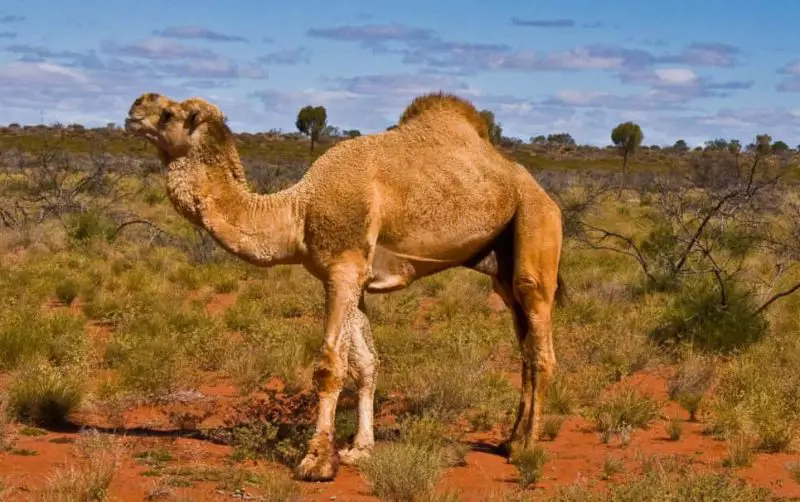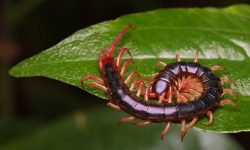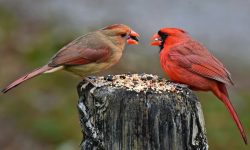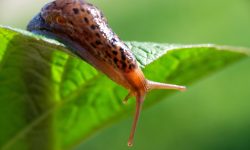Camels are remarkable animals built for survival in some of the harshest environments on Earth. Whether walking through the scorching deserts of Africa or navigating rocky landscapes in the Middle East and Central Asia, camels thrive where many animals cannot. Understanding what camels eat helps explain their resilience, their unique physiology and how they manage to survive in extreme heat, limited water and sparse vegetation.
The natural diet of camels is shaped by the landscapes they inhabit. In deserts, food is unpredictable, and plants are often thorny, salty or extremely dry. Yet camels make use of these tough plants thanks to their strong mouths, specialized digestive system and ability to consume vegetation that most mammals would avoid. Their diet reflects millions of years of adaptation to arid ecosystems.
This guide explores 20 foods camels consume in the wild, offering insight into how these incredible animals survive, what nutritional strategies they rely on and how their feeding behavior supports life in harsh environments.
Understanding the Camel Diet

Camels are herbivores, though their diet looks very different from that of cattle, sheep or horses. They feed on tough, fibrous and sometimes dry vegetation that grows naturally in deserts and semi-arid regions. Their prehensile lips, strong jaws and thickened mouth lining allow them to chew thorny or salty plants without injury. Camels also have a complex, multi-chambered stomach that helps them ferment and digest coarse vegetation efficiently.
Because desert plants can be extremely dry, camels extract moisture from anything they eat. Their digestive system is so efficient that they can go long periods without drinking water, relying on moisture from plants to survive. This makes them especially selective in choosing vegetation that offers hydration in addition to nutrients.
Camel diets change by season. After rare rainfall, desert plants grow rapidly, and camels feed on fresh green shoots and leaves. During dry periods, they shift to thorny shrubs, salty bushes and dried grasses. Their ability to adjust their feeding to seasonal vegetation is key to their survival and movement patterns across the desert.
20 Foods Camels Consume in the Wild
1. Dry Desert Grasses
Dry grasses are among the most common foods camels eat in the wild. Even when grasses lose moisture during hot seasons, camels can still digest them thanks to their strong stomachs and efficient nutrient extraction.
These grasses often grow sparsely, so camels must travel long distances to browse enough for their daily needs. Their wide feet and endurance help them navigate sandy terrain while searching for patches of grass.
Although dry grasses offer limited hydration, they provide foundational fiber that fuels slow, steady energy.
2. Fresh Green Grass
After rare desert rainfall, new green grass sprouts quickly. Camels take advantage of this brief abundance, feeding on tender shoots that offer both hydration and nutrients.
Green grass contains natural moisture that helps camels rehydrate without relying on water sources. This fresh growth becomes especially important during breeding seasons when camels need extra energy.
Because green grass appears only seasonally, camels often alter migration routes to reach these areas.
3. Thorny Shrubs
Thorny plants such as acacia or desert shrubs make up a large part of the camel’s diet. Their thick, leathery lips and tough mouths allow them to chew thorn-covered branches without injury.
These shrubs remain available even during intense droughts, making them reliable survival foods. Camels often break off entire branches and chew them slowly.
The high fiber content supports digestion and provides long-lasting energy.
4. Saltbush
Saltbush, a hardy desert plant, is rich in salt and minerals. Camels tolerate salty plants better than most animals, thanks to specialized kidneys that process salt efficiently.
Saltbush grows in arid, sandy soils where few other plants survive. Camels use this plant as a consistent food source when more palatable vegetation is scarce.
The plant’s moisture content adds hydration during dry periods.
5. Cacti (Certain Species)
Some camel species, particularly dromedaries, consume cactus pads despite their spines. Their thick oral tissues prevent injury while they chew through cactus flesh.
Cacti provide valuable water stores, helping camels supplement hydration naturally. The soft inner pulp contains moisture, minerals and carbohydrates.
Camels typically eat cacti more often during severe droughts when other hydrating foods are unavailable.
6. Acacia Leaves
Acacia trees are common in desert and semi-desert regions. Camels browse acacia leaves because they are nutrient-rich and stay green longer than many plants.
The trees’ height gives camels easy access thanks to their long necks. They strip leaves carefully, often consuming small thorns along with them.
Acacia leaves supply protein, which supports muscle maintenance and growth.
7. Acacia Pods
Acacia seed pods provide concentrated nutrients. They contain both protein and fats, making them valuable when camels need energy reserves.
These pods fall to the ground or remain hanging, giving camels easy access. Camels chew the pods whole, digesting the tough outer shell with ease.
Pods become especially important during harvest seasons when they drop in abundance.
8. Date Palm Leaves
Date palms grow along desert oases, and camels feed on their tough, fibrous leaves. Although not highly nutritious, these leaves provide necessary bulk and fiber.
Camels often eat the lower fronds that dry out over time. Their strong teeth break down the plant fibers that are too tough for most herbivores.
Date palm leaves are available year-round in oasis regions, offering steady sustenance.
9. Date Palm Fruits (Wild or Fallen)
Wild dates growing on native palms sometimes fall to the ground, where camels consume them. These fruits are sweet, energy-rich and hydrating.
Though not a major food source, dates offer quick calories during long treks. Camels often find them near oasis settlements or desert villages.
Their natural sugars support stamina during migration routes.
10. Desert Herbs
Small desert herbs, while seasonal, contribute important vitamins. These soft, aromatic plants grow after rare rains and remain tender for short periods.
Camels browse herbs eagerly because they contain moisture and mild flavors. These herbs often cluster in shaded pockets or between rocks.
Although short-lived, herbs provide valuable nutrients that supplement a camel’s otherwise dry diet.
11. Coastal Vegetation (For Coastal Camel Populations)
Some camel populations living near coasts feed on salt-tolerant plants like mangrove shoots or dune grasses. These plants have high mineral content.
Camels adapted to coastal deserts tolerate salty vegetation thanks to their efficient kidneys. These plants help maintain hydration due to their water-storing tissues.
Coastal feeding demonstrates the camel’s ability to adjust to diverse environments.
12. Tamarisk Leaves
Tamarisk shrubs grow in dry riverbeds and sandy soils. Their salty leaves are a reliable food source during drought.
Camels strip tamarisk branches easily. The plant’s high mineral content benefits camels by replacing salts lost during hot seasons.
Tamarisk grows densely, giving camels large quantities of material to feed on.
13. Willow Leaves (Highlands and River Zones)
In higher-altitude regions or along desert rivers, camels eat willow leaves. These leaves are softer and more nutritious than desert shrubs.
Their moisture content helps camels hydrate naturally, especially during summer heat. Camels may stand in shallow water while browsing near stream banks.
Willow availability reflects seasonal flooding patterns.
14. Millet Stalks (Wild or Semi-Wild)
In certain regions, camels consume millet stalks left from wild or abandoned crops. These stalks are dry but fibrous and help support digestion.
Camels chew the stalks thoroughly to extract whatever nutrients remain. Their stomach fermentation helps break down the cellulose.
During sparse seasons, millet stalks act as emergency food.
15. Sorghum Stalks
Wild sorghum survives in dry environments and produces tough stalks that camels can digest. These stalks offer structural carbohydrates and minimal hydration.
Camels occasionally eat the seed heads if available. Sorghum grows in regions where seasonal rains bring short bursts of plant growth.
Because it dries slowly, sorghum remains edible long after other plants wither.
16. Desert Melons (Wild Melons)
Wild melons or desert gourds grow in sandy soils and offer a unique water-rich food source. Camels break open these fruits with their strong jaws.
The pulp provides hydration and sugars, making it valuable during extreme droughts. Wild melons vary in size and moisture, but camels consume them eagerly.
These fruits appear irregularly, depending on seasonal rainfall.
17. Bush Berries
In certain desert scrublands, camels eat small berries growing on hardy bushes. These berries offer antioxidants, hydration and quick energy.
Although not abundant, berries supplement a camel’s diet with vitamins. Camels browse these plants when they are in season.
Their sweetness makes them especially appealing when food is limited.
18. Tree Bark
During severe drought, camels resort to chewing bark from desert trees. Bark provides limited nutrients but offers fiber and trace minerals.
Camels use their strong incisors to strip bark from branches or tree trunks. This behavior occurs mainly during extreme scarcity.
Despite being low in quality, bark helps sustain camels during long dry spells.
19. Dried Weeds
Dried desert weeds remain available long after flowering. Camels chew these brittle plants easily and digest them using their multi-chambered stomach.
Although weeds offer little moisture, they fill the camel’s digestive system and provide essential fiber. They are common in disturbed lands and open plains.
Their persistent availability makes them a dependable fallback food.
20. Salt-Rich Soil (Occasional)
Camels sometimes lick or consume small amounts of salt-rich soil. This behavior helps replace minerals lost through sweat and supports electrolyte balance.
The soil also contains moisture-trapping minerals that assist hydration. Camels select patches of soil naturally enriched with salts or trace nutrients.
This behavior is rare but reflects their ability to supplement nutritional needs in harsh landscapes.
FAQs About What Do Camels Eat
What do camels eat most often in the wild?
Mostly dry grasses, thorny shrubs and salt-tolerant plants.
Do camels eat cactus?
Some species do, using their tough mouths to handle spines safely.
Do camels drink water daily?
No. They often rely on moisture from plants and drink heavily only when water is available.
Are camels strict herbivores?
Yes. They do not consume meat.
Do camels eat fresh plants?
Yes, especially after rainfall when green shoots appear.
Can camels digest tough, woody plants?
Their multi-chambered stomachs allow them to break down fibrous vegetation.
Do camels eat fruits?
Occasionally, such as wild dates or desert melons.
Do camels browse shrubs or graze grass?
They do both, depending on what’s available.
What helps camels survive food shortages?
Efficient digestion, ability to eat tough plants and storing fat in their humps.
Why do camels eat salty plants?
Their kidneys handle salt well, and salty plants provide essential minerals.
Final Thoughts
Camels survive in environments where few other animals can, and their diet is a key part of that success. By understanding what camels eat, we see how their bodies have evolved to handle tough, thorny, salty and dry vegetation that most herbivores avoid. From acacia leaves and desert herbs to wild melons and saltbush, camels make use of whatever their harsh landscapes provide. Their unique feeding adaptations highlight their remarkable resilience and the incredible biodiversity of desert ecosystems.






